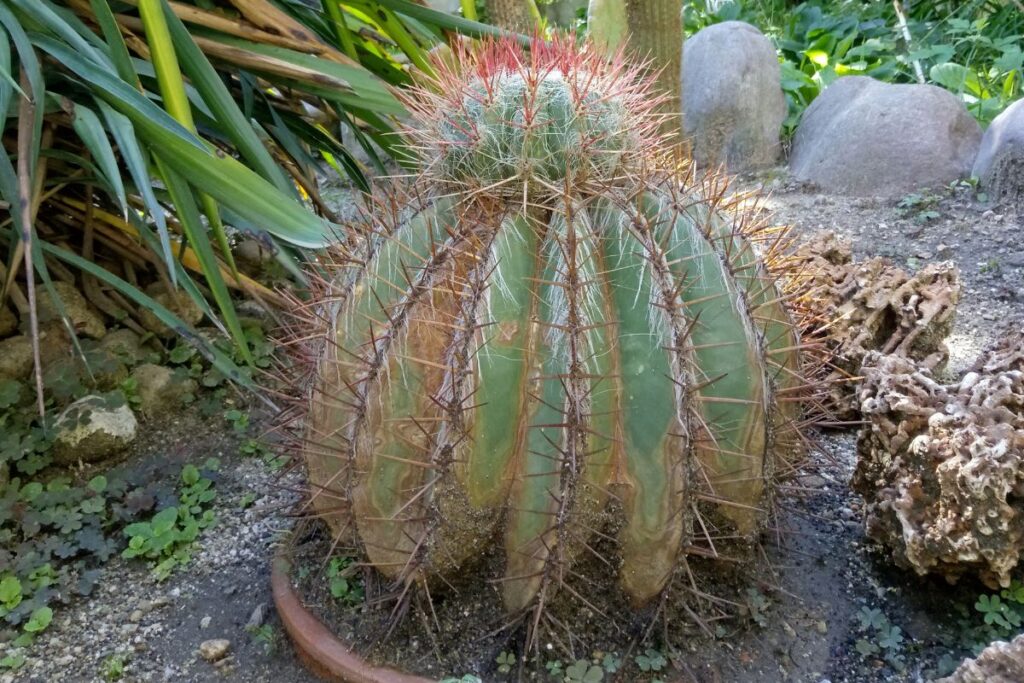Kill Cacti Quickly: Powerful Natural and Manmade Solutions
Tired of those prickly cacti taking over your yard? Constantly getting poked by their sharp needles? Well, have no fear! We’ve got the ultimate guide to help you get rid of those pesky desert plants for good – both naturally and with heavy-duty chemical options.
Whether you want an eco-friendly solution or need to bring out the big guns, this blog has you covered. So sit back, relax, and let’s dive into some seriously effective ways to kill cacti quickly and easily.

Contents
The Natural Way
If you prefer steering clear of harsh chemicals, there are plenty of homemade, all-natural remedies that can zap cacti in no time:
- Boiling Water: Just like it sounds – boiling hot water poured directly onto the cactus’ base. The intense heat quite literally burns and shocks the plant to death.
- Salt Solution: Mix some salt into water and soak the cactus’ soil with the solution. The salt will dehydrate and dehydrate the plant over time.
- Vinegar Spray: The acidity in vinegar is like kryptonite for cacti. Simply mix with water and spray directly onto the plant’s pads and soil.
Just be warned – while natural, some of these methods can take several treatments and a lot of patience to fully eradicate established cacti.
Related Post:
5 Best Gloves for Handling Cactus
Chemical Cactus Killers
For situations when you need cactus gone ASAP, synthetic herbicides formulated with powerful plant-killing chemicals are incredibly effective:
- Glyphosate: One of the most common and potent weed-killers out there. Spray onto the full cactus plant for quick systematic killing.
- Pelargonic Acid: A natural herbicide that dehydrates plants by stripping away their protective coating. Very effective on cacti.
- Imazapyr: This non-selective herbicide attacks the plant’s root system and is great for preventing future regrowth after removal.
Always exercise extreme caution when using chemical herbicides – cover up, watch for overspray, and keep kids/pets away from the area.

How Do You Get Rid Of Cactus Offsets?
You finally got that massive cactus dug up, but wait – there are a ton of tiny new cacti sprouting up from the roots! These “offsets” can be just as annoying.
To stop them in their tracks, carefully dig around the area with a small shovel or trowel, removing any root sections you come across. Then douse the entire area with boiling water or your chosen herbicide to kill anything you missed.
Can I Cut Down A Cactus In My Yard?
Wondering if you can just hack down that towering cactus yourself? The answer is… maybe. Always check regulations in your area first, as some types of cacti may be protected species.
If you get the green light, suit up with thick gloves, long sleeves, and eye protection to avoid those nasty needles. Use a sturdy pruning saw to slowly cut off arm segments, working your way down to the base. Just be very, very careful!

How Do You Throw Away A Cactus?
So you muscled that beast of a cactus out of the ground – now what? You can’t just toss it in the trash bin and risk the spines going everywhere.
First, wrap it thoroughly in newspaper, cloth, or rope to contain the needles. Then, if your city allows, put the bound cactus in a yard waste bin for proper disposal. Or take it to a plant recycling facility. Either way, label it clearly so workers know to handle with care!
FAQs
Will salt kill a cactus?
Salt can dehydrate and potentially kill cacti over time by disrupting their osmosis process. Just be careful not to over-salt surrounding plants.
Will Roundup kill a cactus?
Yup! Roundup (glyphosate) is one of the most effective herbicides for fully eradicating cacti, both above and below ground.
Will boiling water kill cactus?
Absolutely – the intense heat will scorch and kill the cactus rapidly when poured directly on the base and roots.
Does isopropyl alcohol kill cactus?
If concentrated enough, isopropyl alcohol can desiccate and dehydrate cacti by stripping their protective coatings.
Can vinegar kill cactus?
You bet! The acetic acid in vinegar, especially when combined with dish soap, breaks down cactus’ water-proof defenses.
